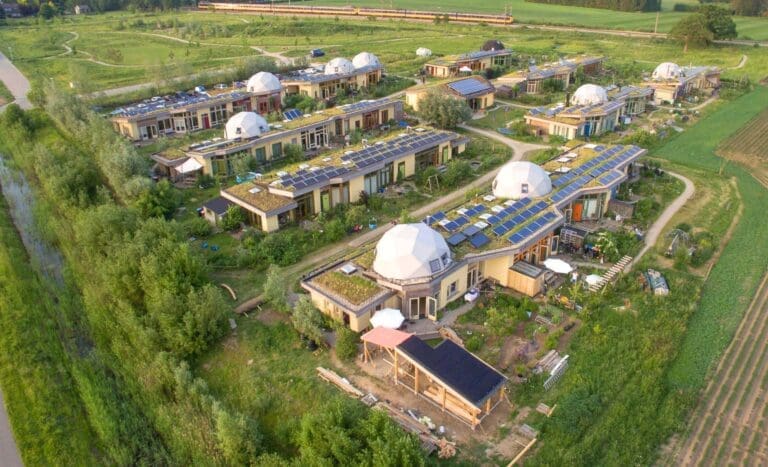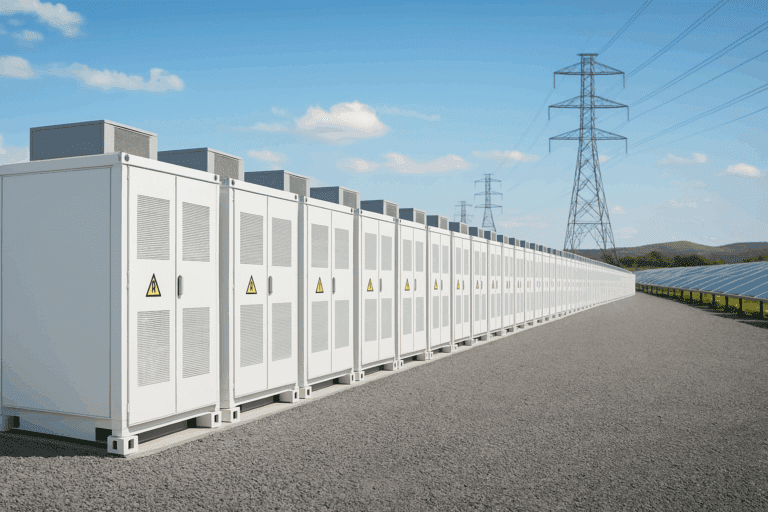Aquaponics is a clever farming method that intertwines aquaculture (raising aquatic animals such as fish) with hydroponics (growing plants without soil). This partnership forms a symbiotic cycle where fish and plants support each other’s growth. By merging biology, ecology, and sustainable practices, aquaponics has become a valuable asset in modern agriculture.
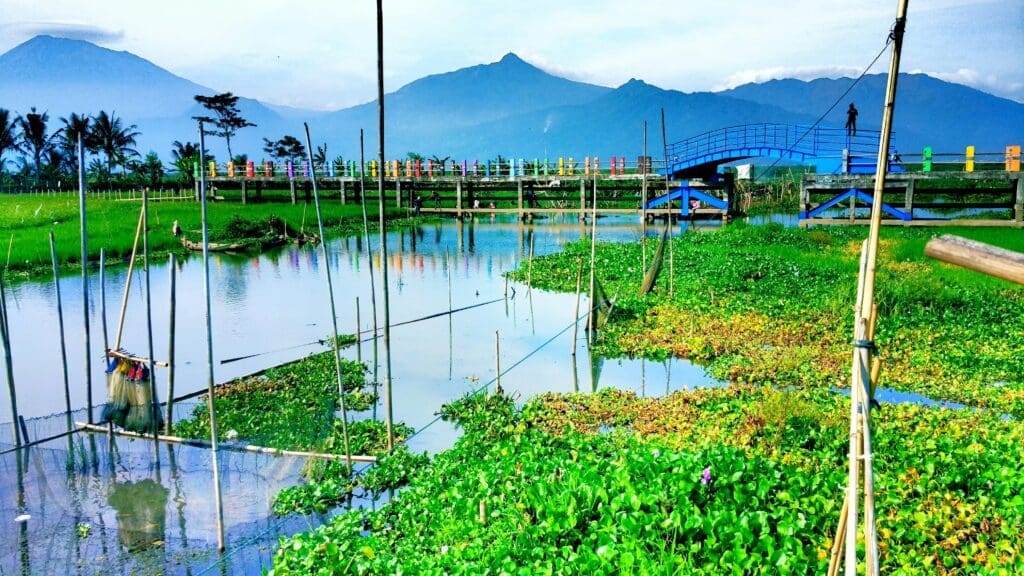
Why Aquaponics Is Important
Aquaponics is a solution to many of the pressing challenges faced by traditional farming methods, such as excessive water use, land degradation, and dependence on chemical fertilizers. By using up to 90% less water and reducing the need for expansive farmland, aquaponics provides a way to produce food sustainably.[1] For consumers, it offers fresh, chemical-free produce and fish, making it a healthier choice for families and communities.
While still a growing and decentralized industry, Aquaponics is widely recognized as a niche yet impactful method of sustainable food production, particularly in urban and resource-scarce areas.
How Aquaponics Operates
Aquaponics systems are built around the principles of mutual benefit. The process is simple yet efficient:
1. Fish Tanks: Fish in tanks release waste, rich in ammonia, as they grow
2. Beneficial Bacteria: Special bacteria convert this ammonia into nitrates, an essential nutrient for plants
3. Plant Beds: Plants absorb these nitrates as natural fertilizers, purifying the water in the process
4. Water Recirculation: The cleaned water is recirculated back to the fish tanks, completing the closed-loop system

Primary Types of Aquaponics Systems:
- Media-Based Systems: In this method, plants are grown in a solid medium, such as gravel or expanded clay pebbles. The medium not only provides physical support for the plants but also serves as a habitat for beneficial bacteria.[2]
- Nutrient Film Technique (NFT): This approach involves a very shallow stream or “film” of nutrient-rich water flowing continuously over the bare roots of plants within a watertight channel. The constant flow ensures the roots receive adequate nutrients and oxygen while minimizing water usage.[2]
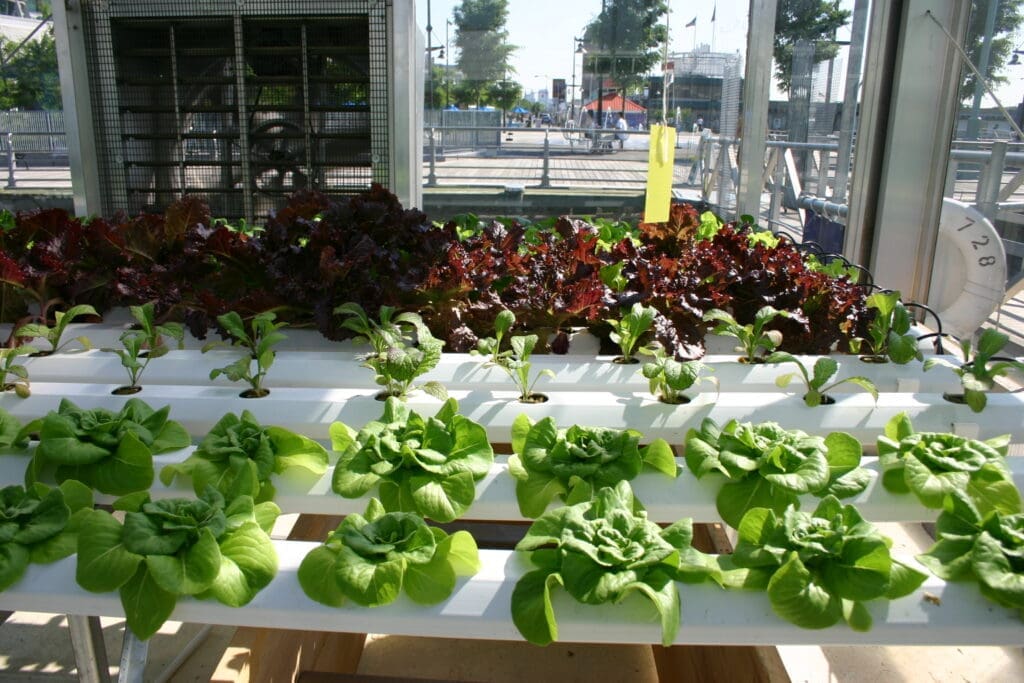
- Deep Water Culture (DWC): In this technique, plants are supported on floating rafts made of polystyrene or similar materials, with their roots submerged in a nutrient-rich water reservoir. This allows the plants to access a constant supply of nutrients and oxygenated water.[2]
The History of Aquaponics
The concept of aquaponics has its roots in ancient agricultural ingenuity, showcasing humanity’s early understanding of sustainable ecosystems. The Aztecs pioneered the use of “chinampas,” stationary, man-made plots built on shallow lake beds or wetlands. These plots were built using layers of mud, vegetation, and other organic materials, creating fertile land surrounded by canals. The canals served as irrigation systems, while also fostering aquatic life. Fish in the water surrounding the chinampas provided nutrients for the crops through their waste, while the plants helped purify the water.[3]
Similarly, in Southeast Asia, farmers developed a method of cultivating rice in paddies while simultaneously raising fish in the same water.
These systems allowed for a harmonious balance, yielding both staple crops and a source of protein in a single setup.[4]

Modern aquaponics emerged in the 1970s and 1980s. The New Alchemy Institute and North Carolina State University pioneered closed-loop systems.[3] Today, aquaponics is a global phenomenon, with systems ranging from backyard setups to commercial farms.
When and Where Aquaponics Thrives
Aquaponics is especially relevant in today’s world, as urbanization and climate change demand innovative agricultural solutions. It enables local food production in urban areas, reduces reliance on transportation, and provides resilience against crises such as droughts and pandemics. This method proves particularly effective in regions with limited arable land or water resources. Furthermore, its decentralized nature empowers communities to take control of their food systems, aligning with Solarpunk ideals of sustainability, local autonomy, and a harmonious coexistence between technology and the natural world.
Technological Advancements and Daily Life Benefits
Modern Aquaponics is yet another great example of smart farming, where agriculture and technology interact. Innovations like IoT sensors and automated nutrient delivery systems have made aquaponics more efficient and accessible.[5]
For you, this means the possibility of having a compact, automated aquaponic system in your home, providing fresh herbs, vegetables, and fish year-round.
Quantifiable Achievements
Aquaponics has achieved significant milestones, both environmentally and economically:
- Water Savings: Up to 90% less water is used compared to traditional farming.[4]
- Land Use Efficiency: Vertical stacked aquaponics farms also occupy 10–30 times less space than traditional farms at the same yield.[6]
- Economic Impact: The global aquaponics market, valued at $1.08 billion in 2023, is projected to grow at a CAGR of 13.5% through 2032.[7]
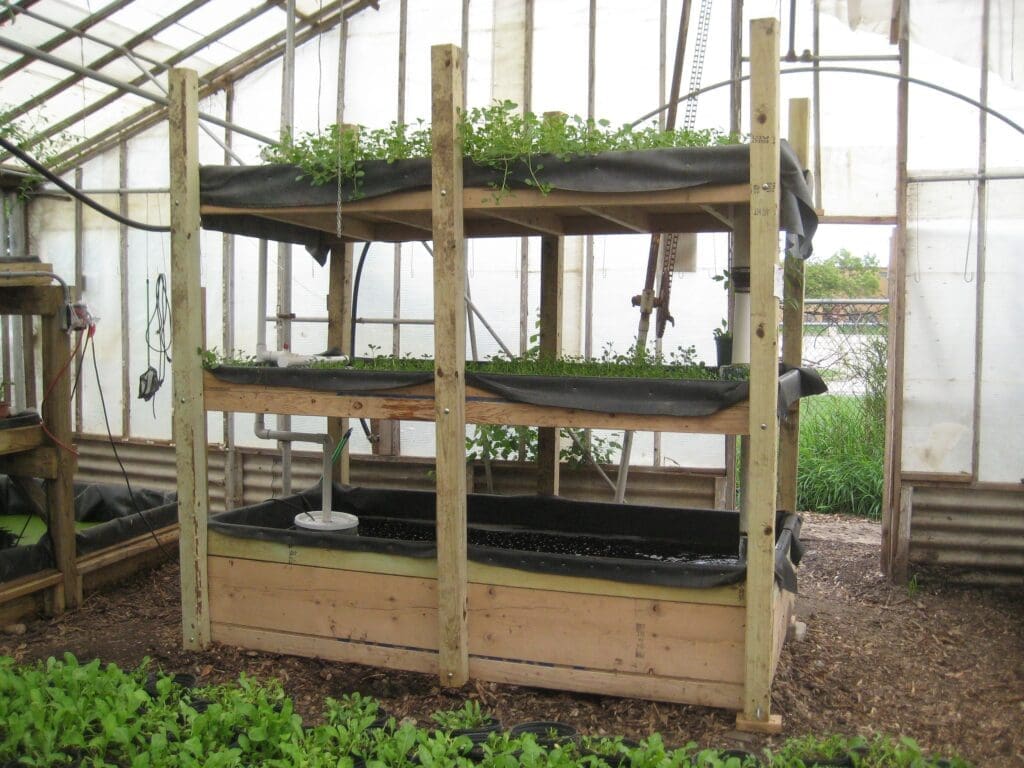
Use Cases
Aquaponics caters to a wide range of users:
- Home Kits: Affordable and compact systems for individual households. Prices range from double to triple digit dollar figures, depending on whether to choose a more simple or feature enhanced systems.
- Educational Systems: Tools for schools to teach sustainability and biology
- Commercial Operations: Large-scale farms for urban food production
This list not only highlights the scalability of aquaponics but also showcases the diversity of its clientele, ensuring accessibility for students, urban farmers, eco-conscious consumers, and businesses seeking sustainable food solutions.[8] Educating young people about the symbiotic relationship between fish and plants fosters a deeper understanding of ecological interdependence. It is essential for the younger generation to understand these natural correlations and embrace Solarpunk ideals of shared knowledge, sustainability, and the pursuit of a regenerative future.

Aquaponics and Solarpunk
Aquaponics aligns beautifully with Solarpunk, a movement advocating for a harmonious future where technology and nature coexist. In a Solarpunk-inspired community, rooftop aquaponic farms can supply fresh food to neighborhoods, powered by renewable energy sources like solar panels. Schools are able to integrate aquaponics into their curricula, teaching students about ecology, sustainability, and self-sufficiency.
By reducing the environmental impact of food production and fostering local economies, aquaponics embodies the Solarpunk vision of a greener, more equitable world.
Conclusion
Aquaponics exemplifies the partnership between fish and plants, a natural symbiosis that holds the key to sustainable agriculture. By merging ancient practices with modern technology, it addresses food security, environmental conservation, and community well-being. For a world increasingly focused on sustainability, aquaponics offers not just a method but a building block for a better future.
Sources:
[1] https://www.britannica.com/technology/aquaponics
[2] https://en.wikipedia.org/wiki/Aquaponics
[3] https://farmingaquaponics.com/the-history-of-aquaponics/
[4] https://atlas-scientific.com/blog/advantages-of-aquaponics/
[5] https://gogreenaquaponics.com/blogs/news/what-is-aquaponics-and-how-does-it-work
[6] https://www.htecfarming.com/aquaponics-and-vertical-farming-system/
[7] https://www.researchandmarkets.com/report/aeroponics
[8] https://www.grandviewresearch.com/industry-analysis/aquaponics-market-report







